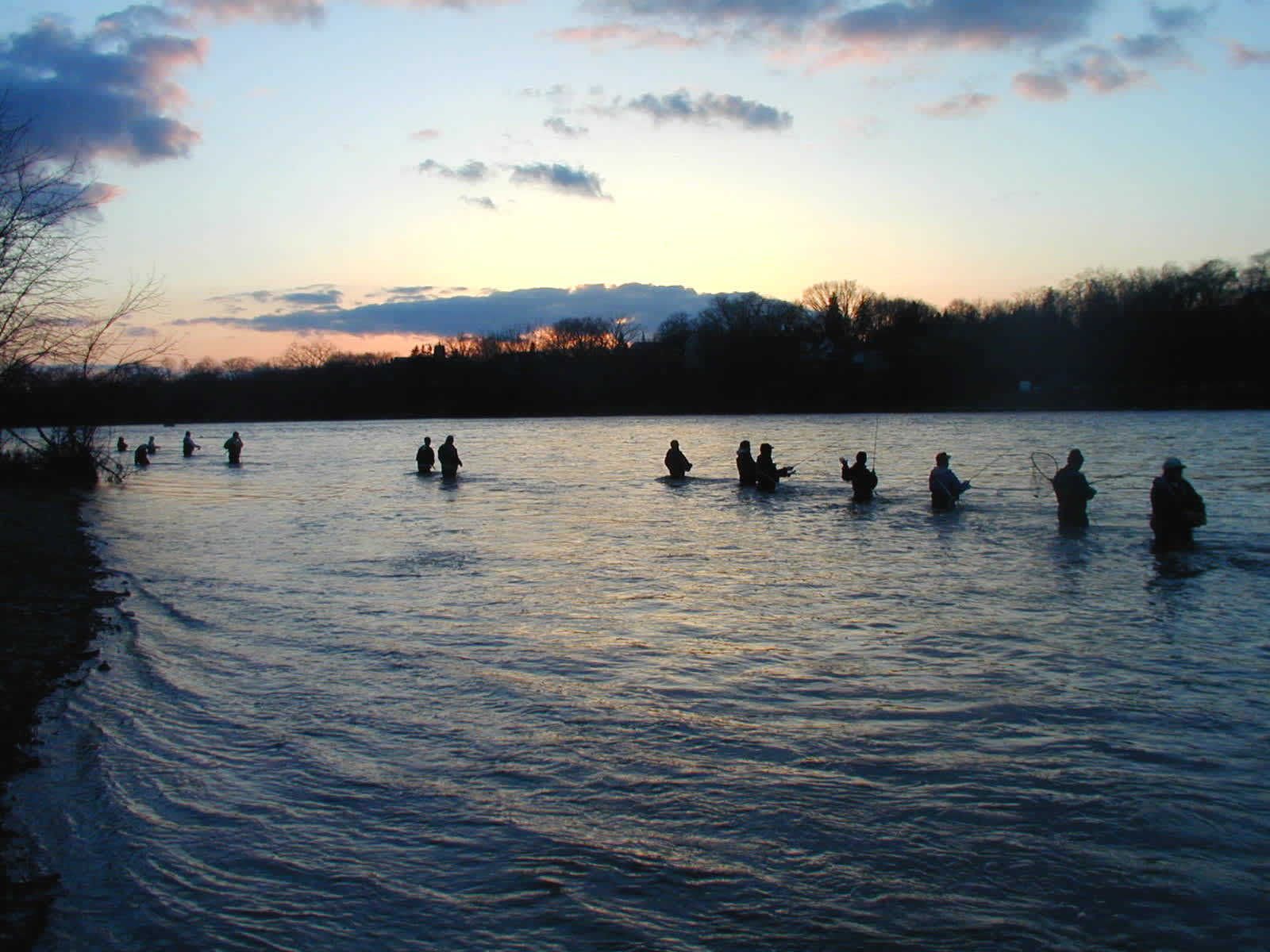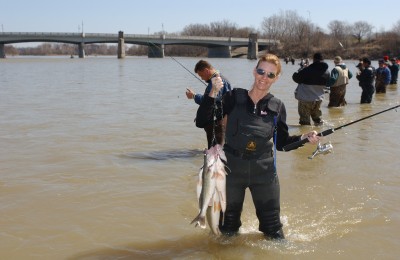Wall-to-wall Spring Walleyes in Ohio Rivers
Bernie Barringer 03.12.14

A window of opportunity offers one of the most productive walleye bites anywhere during the springtime on these Ohio rivers.
It’s no secret that Lake Erie is a walleye factory. In fact, it is estimated that the lake’s population of walleyes is well over three million, and if you would like to board a charter boat, you’ll come back with your limit more days than not. But what about the guy who doesn’t have the coin for a charter boat ride or a boat of his own? Well, there are plentiful big walleyes—and they’re accessible to anyone.
Of Lake Erie’s walleyes, it is estimated that only about 10 percent of them spawn in the rivers of western Ohio. That means more than 300,000 walleyes are going up the Maumee and the Sandusky rivers each spring to complete the procreation ritual. That’s wall-to-wall fish on these small rivers. There is a window of opportunity from mid-March to mid-April each year where any angler who has a pair of waders, a fishing rod, and a pocket full of jigs can have the time of his or her life catching walleyes.
By the middle of March, the ice is leaving Lake Erie and the warmer water flowing down these two rivers attracts the first walleyes of the year. The more aggressive males show up in advance of the females. Catches of 30 to 50 fish per day are common and most of them run from one to six pounds, although some larger males are caught. Within a week to 10 days, the females start to show up in large numbers as the water warms and the eggs ripen.

While the males may be in the river for three weeks to a month, the females tend to move in, spawn, and quickly move right back out, usually within two to three days. Lake Erie is known for the huge walleyes that roam its expansive waters, and this is the time of the year when those giant fish are readily accessible to the shoreline angler. Anglers standing belly-button deep in chest waders net fish up to 15 pounds each year, and 10-pounders are commonplace. The limit is four per day and because these fish are so abundant, taking home a limit for a big fish fry is not frowned upon.
There are access points scattered along both sides of the rivers from the mouth to the upper reaches where the bottom is shallow and rocky. Boaters use the lower river, but it is too treacherous upstream, and wading anglers have it to themselves.
Most fish are caught with one of two presentations. Anglers cast jigs with twister tails from 1/4-ounce to one-ounce depending on the speed of current and the depth of the hole they are casting to. The key is to keep the jig near the bottom. Others use a three-way rig featuring a one- to two-ounce sinker six inches below a three-way swivel with a floating jighead on 24 inches of line tipped with a piece of Powerbait or twister tail. You are looking for a reaction bite, so color is not critical as long as it is highly visible.
You will not be alone on these rivers in the spring—it can be quite crowded when the run is at its peak—but there are plenty of walleyes to go around. Boat or no boat, this is a great opportunity to get out and shake off the cabin fever. The prospect of putting the first spring fresh walleye filets in the frying pan draws a lot of people, but there are plenty of fish to go around.
Follow Bernie’s bowhunting adventures on his blog, bowhuntingroad.com.

